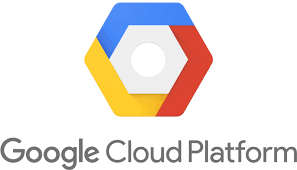Delete or unset clusters contexts and users entries from kubectl config
This tutorial guides you on how to delete or unset clusters, contexts and users entries from kubectl config selectively. I am trying to use Google Cloud GKE to demonstrate on how to delete clusters and other entries from kubectl config.
Delete or unset clusters contexts and users entries from kubectl config
This is the common scenario where there are entries for clusters, contexts and users in kubectl config and you would like to delete those. That is when you try to run the app in kubernetes you might face Kubernetes Error : did you specify the right host or port ?.
Therefore, as mentioned in the above link you might face errors related to kubeconfig and you need to fix them as suggested in that tutorial.
Before you start performing delete or unset operation, first you need to know what are all the entries available in the kubectl config. First, try to run the following kubectl command to view the kubectl config. This command provides you the list of entries for cluster, contexts and users as shown below.
$ kubectl config view
apiVersion: v1
clusters:
- cluster:
certificate-authority-data: DATA+OMITTED
server: https://35.225.192.78
name: gke_poised-shift-300712_us-central1-c_mob-viewer
contexts:
- context:
cluster: gke_poised-shift-300712_us-central1-c_mob-viewer
user: gke_poised-shift-300712_us-central1-c_mob-viewer
name: gke_poised-shift-300712_us-central1-c_mob-viewer
current-context: gke_poised-shift-300712_us-central1-c_mob-viewer
kind: Config
preferences: {}
users:
- name: gke_poised-shift-300712_us-central1-c_mob-viewer
user:
auth-provider:
config:
access-token: ya29.A0AfH6SMAisOX_tYb3y8mIhJYwRdsb6k134QchHvJPCGfUirQ_hgFCnNR8S9xDEm-j2mW5Od-OSuWmVs7ekSW7tVCwQME9YrULr9cxit0I8y3vZWS1D5BoPZUVBYUdHKDiUUe3EeNQhe9McYu76RZMrpNGMkh9JMbDkbtnmR971DM3-dfMX6-3JX_SDNaPL_z3wzzoSPqjTBkWU_U9y9dmp2INVHrpqYdDHpdE3JlaH53vgVce01KTnD-Oilnb2yNX5Ks-_2g
cmd-args: config config-helper --format=json
cmd-path: /usr/lib/google-cloud-sdk/bin/gcloud
expiry: "2021-02-11T06:06:09Z"
expiry-key: '{.credential.token_expiry}'
token-key: '{.credential.access_token}'
name: gcp
Let’s say you would like to unset user entries for gke_poised-shift-300712_us-central1-c_mobile-viewer , then you need to run the following command
$ kubectl config unset users.gke_poised-shift-300712_us-central1-c_mob-viewer Property "users.gke_poised-shift-300712_us-central1-c_mob-viewer" unset.
To unset contexts run the following command.
$ kubectl config unset contexts.gke_poised-shift-300712_us-central1-c_mob-viewer Property "contexts.gke_poised-shift-300712_us-central1-c_mob-viewer" unset.
Run the following command to unset or delete clusters.
$ kubectl config unset clusters.gke_poised-shift-300712_us-central1-c_mob-viewer Property "clusters.gke_poised-shift-300712_us-central1-c_mob-viewer" unset.
Ideally, if you shutdown and clean up your clusters, it should take care of deleting associated entries in the kubectl config. If it does not, then follow the above steps to delete the entries from kubeconfig.
Autogenerate kubeconfig entries
Once you unset or delete the unwanted entries from kubeconfig. Then you can autogenerate the required config for the kubernetes using the following gcloud command.
$ gcloud container clusters get-credentials --zone us-central1-f myhello Fetching cluster endpoint and auth data. kubeconfig entry generated for myhello.
Now, the entry is generated. You can check the entries by running the kubectl config view command again to check for the valid entries.
Hope it helped 🙂
- How to Explore Docker Container’s File System ?
- Docker EXPOSE Port only to the Host on Google Cloud
- Get Docker Container’s IP Address from the Host
- Copy Files between Host and Docker Container
- Start Stop Restart MariaDB on Linux OS
- Set or change root password in Ubuntu Linux
- Putty Fatal Error No supported authentication methods available
- How to find which users belongs to a specific group in linux
- Give write permissions for specific user or group for specific folder in linux
- How to remove an image tag from docker hub ?
- Build a Docker Image with a Dockerfile and Cloud Build in GCP?
- How to create GCP project on Google Cloud Platform
- MariaDB – How to set max_connections permanently ?
- Create GCP project on Google Cloud Platform
- Is it possible to change Google Cloud Platform Project ID ?
- Create non-root SSH user account and provide access to specific folders
- Delete docker repository from the docker hub
- Unable to connect to the server: dial tcp i/o timeout

